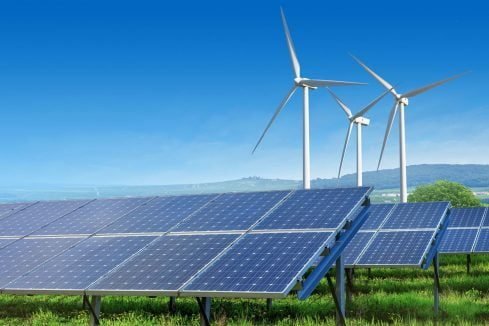In 2024, the renewable energy sector continues to experience significant advancements, driven by the urgent need to combat climate change and reduce reliance on fossil fuels. Innovations in solar, wind, bioenergy, and storage technologies are not only making renewable energy more efficient and affordable but also enabling a more sustainable and resilient energy system. This article explores the latest breakthroughs in renewable energy technologies that are shaping the energy landscape this year.
1. Perovskite Solar Cells
One of the most promising advancements in solar energy is the development of perovskite solar cells. These cells, made from a unique crystal structure, offer higher efficiency rates compared to traditional silicon-based cells. In 2024, researchers have achieved perovskite solar cells with efficiency rates exceeding 30%, making them highly competitive. Additionally, these cells are cheaper to produce and can be manufactured using low-temperature processes, further reducing costs. Their flexibility allows for applications in various settings, from traditional solar panels to wearable technology and building-integrated photovoltaics.
2. Floating Wind Turbines
Offshore wind energy is expanding rapidly, and floating wind turbines are at the forefront of this growth. Unlike traditional fixed-bottom turbines, floating turbines can be installed in deeper waters where wind resources are stronger and more consistent. In 2024, large-scale floating wind farms are being deployed, with advancements in anchoring systems and floating platforms. These innovations enhance the stability and efficiency of turbines, making offshore wind a more viable and significant contributor to the global energy mix.
3. Advanced Bioenergy
Bioenergy technologies are evolving with a focus on sustainability and efficiency. In 2024, the use of algae as a biofuel source is gaining traction. Algae can produce high yields of biofuel without competing with food crops for land. New methods for cultivating and harvesting algae are improving the scalability and cost-effectiveness of this biofuel. Additionally, advancements in anaerobic digestion technology are enhancing the efficiency of biogas production from organic waste, providing a renewable source of energy while reducing waste and greenhouse gas emissions.
4. Green Hydrogen
Hydrogen produced using renewable energy, known as green hydrogen, is becoming a cornerstone of the clean energy transition. In 2024, electrolyzer technologies, which split water into hydrogen and oxygen using electricity, have become more efficient and less costly. This progress, combined with increased renewable energy capacity, is making green hydrogen a viable option for decarbonizing industries such as steel production, transportation, and chemical manufacturing. Large-scale projects and infrastructure for green hydrogen production, storage, and distribution are being developed globally.
5. Next-Generation Energy Storage
Energy storage is critical for balancing the intermittent nature of renewable energy sources. In 2024, next-generation battery technologies, such as solid-state batteries and flow batteries, are making significant strides. Solid-state batteries, which use a solid electrolyte instead of a liquid one, offer higher energy densities, faster charging times, and improved safety. Flow batteries, which store energy in liquid electrolytes contained in external tanks, provide long-duration storage solutions ideal for grid applications. These advancements are enhancing the reliability and flexibility of renewable energy systems.
6. Artificial Intelligence and Smart Grids
Artificial intelligence (AI) and smart grid technologies are revolutionizing the management and distribution of renewable energy. In 2024, AI algorithms are being used to optimize energy production, predict maintenance needs, and manage demand response. Smart grids, which integrate digital technology with the electrical grid, are enabling real-time monitoring and control of energy flows, facilitating the integration of distributed energy resources like rooftop solar panels and electric vehicles. These technologies are improving the efficiency, resilience, and sustainability of the energy system.
Conclusion
The year 2024 marks a period of remarkable innovation in the renewable energy sector. Advances in solar and wind technologies, bioenergy, green hydrogen, energy storage, and smart grid systems are paving the way for a more sustainable and resilient energy future. As these technologies continue to evolve and scale, they offer the potential to significantly reduce greenhouse gas emissions, enhance energy security, and create a cleaner, greener world for future generations.








